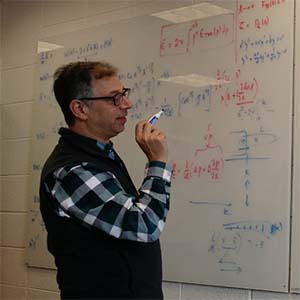
CPEP Seminar – Back to Aristotle: Bringing Hydraulics Into Plants
Speaker: Gabriel Katul, Distinguished Professor of Hydrology and Micrometeorology, Nicholas School of the Environment, Duke University
Life requires movement – an observation that has been attributed to Aristotle (4th century BC). Curiously, optimality principles pertaining to movement such as Fermat’s principle of least travel time, the principle of least action, or flows take the path of least resistance have all been originally proposed for physical systems devout of life.
Despite the connection between movement and life, the use of optimality theories in plant hydraulics has and continues to be under-utilized. Attention to water movement in plants is not new and has formed the cornerstone for the so-called “vitalists” view.
In 1898, Francis Darwin noted that “transpiration is stomatal rather than curticular, so that other things being equal, the yield of watery vapour depends on the degree to which stomata is open, and may be used as an index to their condition”. Curiously, Darwin was a harsh critic of cohesion-tension theory in plant xylem – a theory proposed by Dixon and Joly and despised by vitalists back then. Darwin noted that “To believe that columns of water should hang in the tracheals like solid bodies, and should, like them, transmit downwards the pull exerted on them at their upper ends by the transpiring leaves, is to some of us equivalent to believing in ropes of sand”.
The developments of these ideas in parallel with progress in statistical mechanics, xylem network mapping, and sucrose transport in phloem are reviewed and linked together using optimality theories. This concept has been particularly successful at explaining the form and function of terrestrial vegetation from eco-hydrological and carbon-economy perspectives, and across spatial and temporal scales.
Optimality approaches may complement process-based approaches when mechanistic knowledge is scarce – resembling ‘closure models’ in turbulence theories. In this talk, Katul will discuss a blueprint of how these theories can be bridged to explain widely used empirical formulations of stomatal conductance, the shape of xylem vulnerability curves, and capacity of the phloem to transmit sugars.
This seminar can also be viewed via our live stream.
Hosted by the Climate, People and the Environment Program (CPEP).